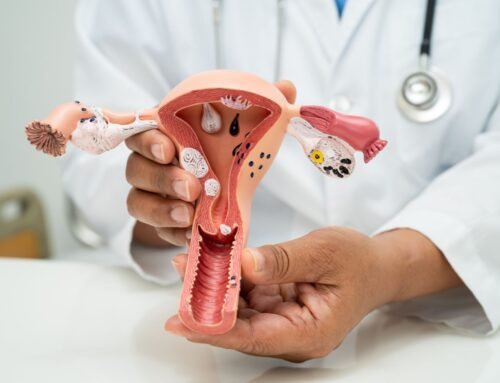To make the most out of your urgent care visit, it’s essential that you know the best hours to go to urgent care.
The healthcare system can be challenging, especially when faced with unexpected medical concerns that require prompt attention. Urgent care facilities offer a valuable alternative to emergency rooms for non-life-threatening issues.
Selecting the right time to visit urgent care can significantly impact your overall experience. Remember, your health is a priority, and finding the optimal time to seek urgent care can contribute to a smoother and more effective medical assistance experience.

What time of day is urgent care least busy?
When it comes to seeking medical attention at urgent care facilities, timing can play a crucial role in determining the efficiency of your visit.
While urgent care centers are designed for prompt care, there are certain times of the day when they tend to be less busy, ensuring shorter wait times and quicker access to healthcare professionals.
One of the optimal times to visit urgent care is during the early morning hours. Typically, the facility opens its doors between 8:00 a.m. and 9:00 a.m. This period is often less congested as many people are still commuting to work or tending to other responsibilities.
If an early morning visit is not feasible, consider aiming for mid-morning or early afternoon appointments. By this time, the initial rush from patients seeking care before work has subsided, and the lunchtime rush has not yet begun.
To minimize wait times, you should avoid peak hours, typically during the after-work rush. Weekdays between 5:00 p.m. and 9:00 p.m. can be particularly busy as individuals address medical concerns after finishing their workday.
Midweek days often experience lower patient volumes compared to Mondays or Thursdays, providing an opportunity for quicker attention from healthcare professionals.
What time is least busy at the ER?
Emergency rooms (ERs) are vital healthcare resources, but the urgency and unpredictability of cases can lead to varying levels of busyness. For those seeking prompt attention with potentially shorter wait times, understanding the least busy hours at the ER is crucial.
The best time to visit the ER with potentially shorter wait times is during the early morning hours, typically between 4:00 a.m. and 7:00 a.m. During this time, the overnight cases have often been addressed, and there tends to be a lull before the day’s activities pick up.
To better gauge the least busy hours at your local ER, check with hospitals or healthcare providers for insights into their patient traffic patterns. Some hospitals may provide online tools or phone services to inform you of current wait times, helping you make informed decisions about when to seek care.
For non-life-threatening issues, urgent care centers can be an alternative to the ER. They typically handle a range of medical concerns with shorter wait times. Before heading to the ER, evaluate if your situation aligns with the services offered by urgent care, potentially saving you time and ensuring timely attention.
What is the difference between Urgent Care and ER?
Urgent care facilities are designed to address non-life-threatening medical concerns that require immediate attention but fall short of the severity typically handled by an ER.
These centers offer convenient access to healthcare professionals for issues like minor injuries, illnesses, or preventive care, often with shorter wait times than an ER.
On the other hand, the ER is equipped to handle critical and life-threatening emergencies, including severe injuries, chest pains, or acute illnesses. ERs operate 24/7, providing a comprehensive range of services and specialized medical staff to handle the most urgent cases.
While urgent care is ideal for prompt attention to less severe issues, the ER remains the primary destination for critical situations demanding immediate and comprehensive medical intervention.
What can you say to get seen faster in an emergency room?
The urgency of cases determines prioritization, but there are strategies to enhance the likelihood of getting seen faster in the ER. Consider these tips to navigate the process more effectively.
- Communicate Severity: When registering or interacting with triage staff, describe the symptoms or condition concisely and accurately. Communicate the severity of the situation, emphasizing any worsening symptoms or signs of distress.
- Be Specific and Detailed: Provide specific details about the nature of the issue, the onset of symptoms, and any relevant medical history. The more information you can provide, the better healthcare professionals can assess the urgency of your case.
- Advocate for Yourself: While maintaining respect and patience, politely advocate for the urgency of your situation. If there are changes in your condition or if you have been waiting for an extended period, discreetly inform the staff to ensure they are aware of your evolving needs.
- Bring Essential Documentation: Carry essential documents, such as identification, insurance information, and a list of current medications. Having these readily available can streamline the registration process and contribute to faster assessment and care.
- Understand Triage Prioritization: Recognize that triage staff assess patients based on the severity of their conditions. While it may be tempting to compare wait times, trust the professionals in their prioritization process, ensuring that the most critical cases receive immediate attention.
- Follow Instructions Promptly: Once triaged, follow any instructions given by healthcare professionals promptly. This may include moving to a specific area, providing additional information, or undergoing preliminary assessments. Compliance with these instructions can contribute to a more efficient process.
What is the busiest day of the year for urgent care?
Determining the absolute busiest day of the year for urgent care facilities can be challenging, as it often depends on various factors such as location, seasonal illnesses, and public holidays.
In the United States, for instance, the winter months, particularly December through February, tend to be busier due to an increase in respiratory illnesses, flu cases, and cold-related injuries.
Additionally, the day after major holidays, such as Thanksgiving or Christmas, may see heightened activity as people address medical concerns that may have been put off during the holiday.
However, the busiest day can vary, and it’s essential to check with local urgent care providers or healthcare authorities for more accurate and region-specific information.
Why go to Gam-Med?
Gam-Med stands out as an exceptional urgent care provider, earning a reputation for excellence in the healthcare landscape.
Committed to delivering prompt and high-quality medical services, Gam-Med excels in providing compassionate care for a wide range of non-life-threatening issues.
Share This Story, Choose Your Platform!
Let’s Stay In Touch
Let’s Stay In Touch
Subscribe to the Gam-Med’s newsletter to stay in the know of changes, events, new policies and procedures.




